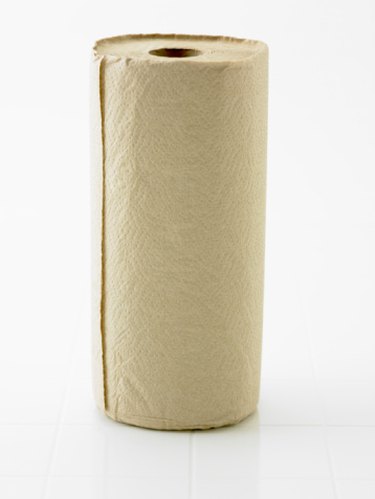
If you have ever spilled water or any other type of liquid all over a surface and wondered how paper towels absorbed the mess so quickly, the answer is cellulose fibers. These cellulose fibers are found in all paper towels, and are responsible for helping them absorb water more effectively than other types of paper, such as napkins or paper plates.
About
Video of the Day
The cellulose fibers in paper towels are actually sugar molecules. These tiny molecules are connected to much larger cellulose molecules. Although they are made of sugar, humans do not have the ability to digest them, but a cow or goat can. Cellulose has an effect similar to fiber on humans, helping food to move through the digestive system.
Video of the Day
Composition
Most paper towels are made from trees, and cellulose is the carbohydrate that most plants are composed of. Cellulose is made up of polymers, which are large molecules. The attraction between monomers, the individual sugar molecules in the polymer chain, and water molecules are what creates the absorption in paper towels.
How It Works
Capillary action is the term used to describe the process of absorbing water into a paper towel. This is comparable to the way a plant absorbs water. Instead of being attracted to each other, the cellulose molecules are attracted to the water, so they fill the empty spaces between the cellulose fibers.
Most Absorptive Paper Towels
No matter which brand of paper towels you purchase, there is no way to guarantee that each roll will contain the same level of absorbency. This is due to the natural fibers they are composed of not being strong enough to connect the same way each time. Therefore even if paper towels are made from the same manufacturer, their level of absorbency will vary.